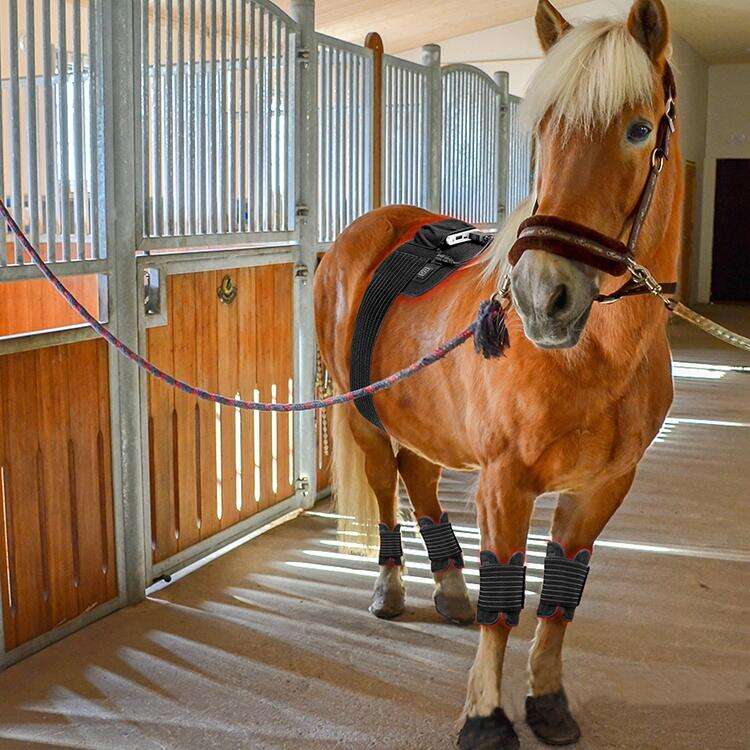
Shenzhen Junneeled Technology Co., Ltd.
Discover premium red light therapy panel, belt, pad, mask, and cap designed to enhance wellness and promote healing. Experience effective light therapy solutions.
Red Light Therapy (RLT) is a powerful tool for enhancing cellular repair, particularly in muscles. Operating within wavelengths ranging from 600 to 1000 nanometers, RLT influences essential cellular processes. At the heart of these processes are mitochondria, the cell's powerhouse that absorbs red light, leading to increased production of Adenosine Triphosphate (ATP). This molecule is crucial for energy production and thus becomes instrumental during recovery periods. According to research, enhanced ATP production accelerates cellular repair and growth, contributing to faster recovery times. This is especially beneficial for athletes and active individuals seeking to minimize downtime due to muscle fatigue or injury. By harnessing the power of RLT, one gains a scientifically supported method for boosting muscular recovery and maintaining optimal physical performance.
RLT not only targets cellular repair but also plays a significant role in reducing inflammation and oxidative stress. Studies indicate that red light stimulates the release of healing compounds that are vital for mitigating inflammation post-exercise. Consequently, this leads to a remarkable decrease in muscle soreness, positioning RLT as an effective addition to post-workout recovery routines. Reduced inflammation translates to improved athletic performance and a lowered risk of injury, thus making RLT a valuable tool for the sustained health of athletes. Incorporating RLT into a regular fitness routine can help athletes manage their recovery more effectively, optimizing their readiness for subsequent exercises or competitions. This dual action of cellular repair and inflammation reduction underscores the comprehensive benefits of RLT for maintaining muscle performance.
Red light therapy belts can noticeably speed up muscle recovery following strenuous workouts. These devices, when used consistently, contribute to a quicker muscle repair rate, decreasing fatigue and promoting overall recovery efficiency. Clinical trials have consistently shown that incorporating red light therapy (RLT) into athletes' recovery routines facilitates faster muscle healing. As a result, many athletes report the ability to train more intensively and frequently, maintaining their competitive edge with lesser downtime.
RLT belts significantly enhance microcirculation, leading to improved nutrient and oxygen delivery to damaged tissues. This increased blood flow is pivotal in accelerating the healing process of muscles and connective tissues post-injury. Research studies have indicated that using red light therapy can result in quicker recovery times, thereby minimizing the period that athletes spend away from peak physical condition. Athletes incorporating RLT into their rehabilitation regimes can experience shortened recovery durations and maintain heightened competitive performance levels.
RLT provides a pain-free and effective method for managing chronic pain associated with injuries or exhaustive physical exertions. This therapy naturally aids healing processes, reducing athletes' dependency on pain medications that often carry undesirable side effects. Long-term studies suggest that RLT can yield lasting pain relief, making it an invaluable tool for long-term athletic wellness. Being a non-invasive solution, RLT belts offer athletes a safe and sustainable option to enhance recovery and maintain their physical prowess without the risks tied to pharmaceutical interventions.
The 1500W Red Light Therapy Panel is designed for full-body treatment, offering extensive coverage to enhance overall wellness. It utilizes multiple wavelengths such as 630nm, 660nm, 810nm, and 850nm, ensuring optimal absorption for various health benefits, including muscle recovery and skin health improvement. The device features 300 pieces of 5W dual-chip LEDs, contributing to its efficacy and user satisfaction in improving skin health and accelerating muscle recovery.
The 400W Red Light Therapy Panel is crafted for focused therapy, targeting specific muscle groups to address injuries and chronic pain areas effectively. Compact and user-friendly, this device integrates 80 pieces of 5W dual-chip LEDs emitting wavelengths of 660nm and 850nm. Users commonly share success stories of pain reduction and expedited recovery rates with this targeted therapy panel, which is ideal for at-home rehabilitation routines.
Tailored for localized treatments on the scalp and neck, the Red Light Therapy Cap is praised for its convenience and effectiveness in alleviating head-related pains, including tension headaches, and enhancing scalp health. With 120 LEDs divided between 660nm and 850nm wavelengths, this cap allows users to engage in daily activities while benefiting from therapy, thus promoting hair health alongside pain relief.
For athletes or frequent travelers, the Portable Red Light Therapy Flashlight offers on-the-go therapeutic options. Despite its compact size, it efficiently delivers red light therapy for pain relief across different wavelengths such as 630nm, 660nm, and 850nm. User feedback underlines its utility in maintaining recovery protocols while away from home, emphasizing ease of use and convenient storage.
For those seeking the most effective outcomes from red light therapy (RLT), understanding the ideal session duration and frequency is crucial. Experts generally recommend sessions lasting between 10 to 20 minutes, depending on the specific area being treated. By adhering to this timeframe, users can ensure that their therapy is both efficient and impactful. Frequency of sessions is equally important and typically ranges from three to five times per week. This consistent regimen supports progressive and cumulative benefits, reinforcing the therapy's positive effects on muscle recovery and skin health. Following these guidelines can significantly enhance the outcomes of RLT, as it ensures that the therapy integrates seamlessly into users' health and wellness routines.
The synergistic combination of RLT and cold therapy is gaining attention for its ability to amplify recovery processes and reduce inflammation. Athletes and fitness enthusiasts find alternating between heat from RLT and cold exposure offers an optimal recovery strategy. This method leverages the vasodilation from heat, which improves blood flow, followed by vasoconstriction from cold, which reduces swelling. Many professionals in the sports and rehabilitation sectors advocate for this combinatory approach, owing to the notable improvements observed in recovery timelines. By integrating RLT with cold therapy, individuals can maximize the benefits, achieving superior results in muscle recovery and pain relief.